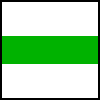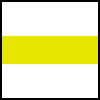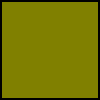1.6 Respiratory Protection
Respiratory Protection
The information in this section will provide basic information to workers and employers who may find themselves using respiratory protection for the first time. The guidance provides information on what respirators are, how they work, and what is needed for a respirator to provide protection. For additional information see:
OSHA Bulletin: General Respiratory Protection Guidance for Employers and Workers
What is a respirator?
A respirator is a device that protects you from inhaling dangerous substances, such as chemicals and infectious particles. Respirators are among the most important pieces of protective equipment for working in hazardous environments. Selecting the right respirator requires an assessment of all the workplace operations, processes or environments that may create a respiratory hazard. The identity of the hazard and its airborne concentrations need to be determined before choosing a respirator. This assessment should be done by experienced safety personnel or by an industrial hygienist. There are several different types of respirators, as described below.

Dust Mask by Rita Wheeler is licensed under CC BY 4.0
How do respirators work?
Respirators work by either filtering particles from the air, chemically cleaning (purifying) the air, or supplying clean air from an outside source.
Particulate Respirators
Particulate respirators are the simplest, least expensive, and least protective of the respirator types available. These respirators only protect against particles (e.g., dust). They do not protect against chemicals, gases, or vapors, and are intended only for low hazard levels. The commonly known “N-95” filtering facepiece respirator or “dust mask” is one type of particulate respirator, often used in hospitals to protect against infectious agents. Particulate respirators are “airpurifying respirators” because they clean particles out of the air as you breathe.
Particulate respirators:
- Filter out dusts, fumes and mists.
- Are usually disposable dust masks or respirators with disposable filters.
- Must be replaced when they become discolored, damaged, or clogged.
Examples: filtering facepiece or elastomeric respirator.
Chemical Cartridge/Gas Mask Respirator
Gas masks are also known as “air-purifying respirators” because they filter or clean chemical gases out of the air as you breathe. This respirator includes a facepiece or mask, and a cartridge or canister. Straps secure the facepiece to the head. The cartridge may also have a filter to remove particles.
Gas masks are effective only if used with the correct replaceable cartridge or filter (these terms are often used interchangeably) for a particular biological or chemical substance. Selecting the proper filter can be a complicated process, but is aided through color-coding based on the substance being filtered. There are cartridges available that protect against more than one hazard, but there is no “all-in-one” cartridge that protects against all substances. You may even require more than one cartridge to protect against multiple hazards. It is important to know what hazards you will face in order to be certain you are choosing the right filters/cartridges.
There are nine classes of particulate filters which are broken down into three series: N, R, and P. Each series (N, R, and P) is available at three efficiency levels: 95%, 99%, and 99.97%. The N series filter is used in environments free of oil mists. The R series filters can be exposed to oil mists, but should only be worn for one work shift. The P filter can be exposed to oil mists for longer than one work shift.
Color coding for gas mask cartridges/canisters
| Contaminant | Color | Description |
|---|---|---|
| Acid gases |  |
White |
| Hydrocyanic acid gas |  |
White with 1/2 inch green stripe completely around the canister near the bottom |
| Chlorine gas |  |
White with 1/2 inch yellow stripe completely around the canister near the bottom |
| Organic Vapors |  |
Black |
| Ammonia gas |  |
Green |
| Acid gases and ammonia gas |  |
Green with 1/2 inch white stripe completely around the canister near the bottom |
| Carbon monoxide |  |
Blue |
| Acid gases & organic vapors |  |
Yellow |
| Hydrocyanic acid gas and chloropicrin vapor |  |
Yellow with 1/2 inch blue stripe completely around the canister near the bottom |
| Acid gases, organic vapors, and ammonia gases |  |
Brown |
| Radioactive materials, except tritium & noble gases |  |
Magenta |
| Pesticides |  |
Organic vapor canister plus a particulate filter |
| Multi-Contaminant and CBRN agent |  |
Olive |
| Any particulates - P100 |  |
Purple |
| Any particulates - P95, P99, R95, R99, R100 |  |
Orange |
| Any particulates free of oil - N95, N99, or N100 |  |
Teal |
Color Blocks by Jonathan Kevan is licensed under CC BY 4.0
Powered Air-Purifying Respirator (PAPR)
Powered air-purifying respirators use a fan to draw air through the filter to the user. They are easier to breathe through; however, they need a fully charged battery to work properly. They use the same type of filters/cartridges as other air-purifying respirators. It is important to know what the hazard is, and how much of it is in the air, in order to select the proper filters/cartridges.
Self-Contained Breathing Apparatus
Self-Contained Breathing Apparatus (SCBA) is the respirator commonly used by firefighters. These use their own air tank to supply clean air, so you don’t need to worry about filters. They also protect against higher concentrations of dangerous chemicals. However, they are very heavy (30 pounds or more), and require very special training on how to use and to maintain them. Also, the air tanks typically last an hour or less depending upon their rating and your breathing rate (how hard you are breathing).
Provide clean air from a portable air tank when the air around you is simply too dangerous to breathe.
All of these respirators (except for the “dust masks” or filtering face pieces) are available in either half-mask or full-face pieces.
Frequently Asked Questions (Respirators)
Respirator Considerations:
Questions to consider regarding any respirator you are considering purchasing:
- What protection (which chemicals and particles, and at what levels) does the respirator provide?
- Is there more than one size?
- Which size should I use?
- How do I know if the gas mask or respirator will fit?
- What type of training do I need?
- Are there any special maintenance or storage conditions?
- Will I be able to talk while wearing the respirator?
- Does the hood restrict vision or head movement in any way?
- Can I carry the device in the trunk of my automobile?
- Is a training respirator available?
Additional Information
For more information on OSHA’s rules and requirements related to respiratory protection, visit OSHA’s website at www.osha.gov/SLTC/respiratoryprotection/index.html.
This is one in a series of informational fact sheets highlighting OSHA programs, policies or standards. It does not impose any new compliance requirements. For a comprehensive list of compliance requirements of OSHA standards or regulation, refer to Title 29 of the Code of Federal Regulations. This information will be made available to sensory-impaired individuals upon request. The voice phone is (202) 693-1999; teletypewriter (TTY) number: (877) 889-5627.
For more complete information:
OSHA
Occupational Safety and Health Administration
U.S. Department of Labor
www.osha.gov
(800) 321-OSHA
